By Sidhart Krishnamurthi, Product Management @ Recogni
Imagine this common scenario related to dangerous lighting conditions – you are driving in a residential neighborhood on a foggy morning, coming up on a busy intersection. Due to the imperfect weather, you do not notice the upcoming red light in a timely manner. By the time you react, you make an illegal left turn and a collision occurs with another driver moving in the opposite direction.
Looking at the aggregate societal impact of such situations – almost 40,000 of these types of accidents occur annually, amounting to over 15,000 injuries. In addition to a foggy environment, there are numerous other factors that can lead to dangerous lighting conditions. Sun glare poses a major threat to one’s eyesight, mandating quicker reactions, which, unfortunately, may not be feasible. As a result, almost 10,000 sun glare-related accidents occur yearly. Also, many roads, particularly in rural areas, have inadequate street lighting, limiting one’s awareness of surrounding objects. Thus, an occupant on this type of road has a 35% higher chance of being a victim of a late-night/early-morning collision.
Delving into the mechanism behind why such collisions occur – humans have a non-zero (1.5s) reaction time. Because of this delay, people often cannot make a safe maneuver in a timely manner. Check out the series of images below to visualize this problem:
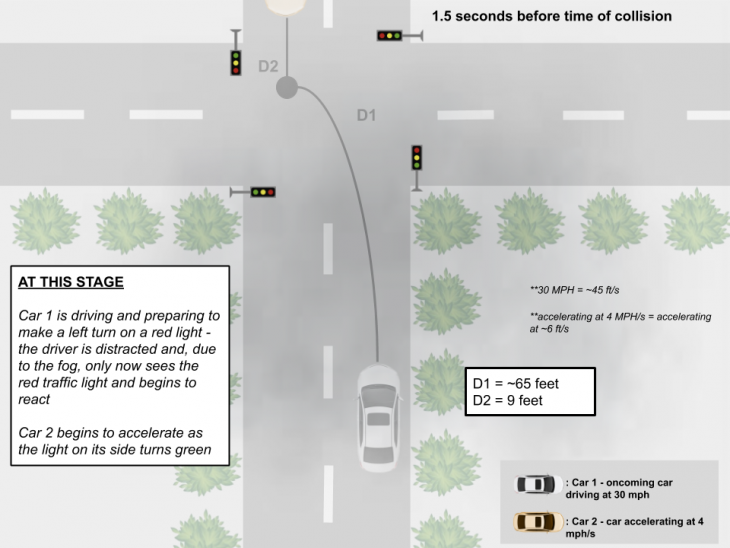
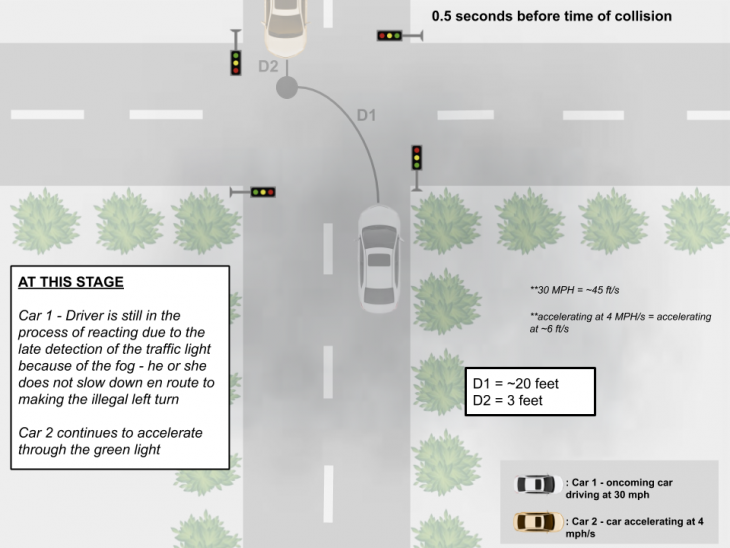
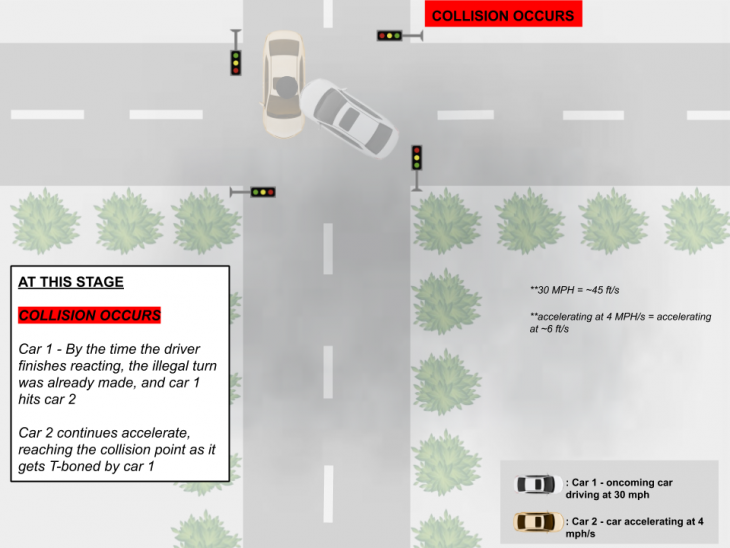
As you can see, due to the dangerous lighting brought upon by fog, by the time the driver notices the red light, it is too late, and a dangerous scenario is at hand. Clearly, there must be a solution that can eliminate the human reaction time and improve road safety for everyone.
Fortunately, autonomous vehicles (AV) present a solution to dangerous lighting conditions on the road. With humans only acting as passengers, the non-zero reaction time is eliminated. To picture the effect of this, take a look at the series of images below to see a depiction of the above scenario, only with self-driving vehicles:
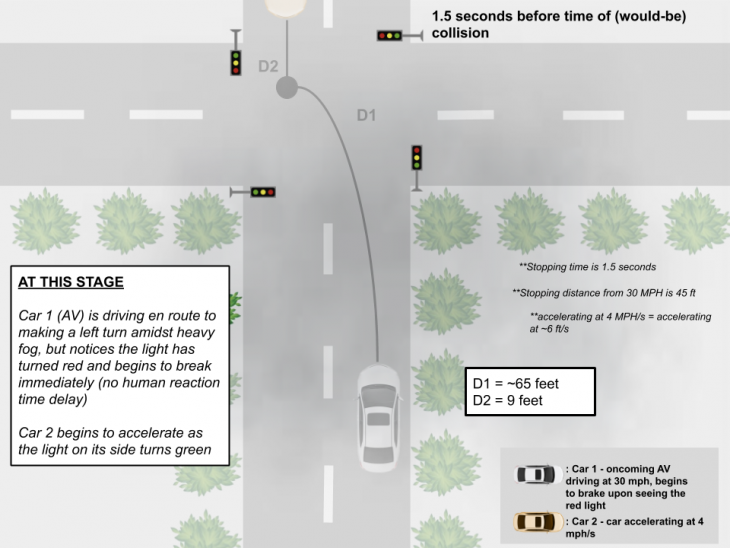
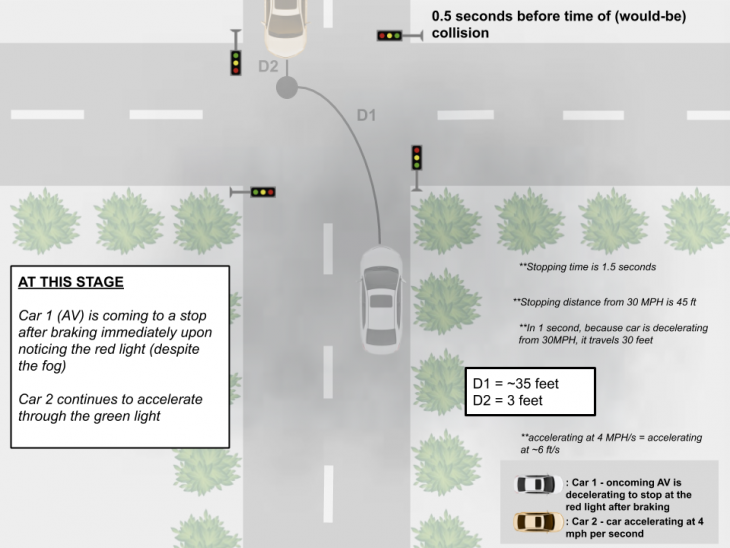
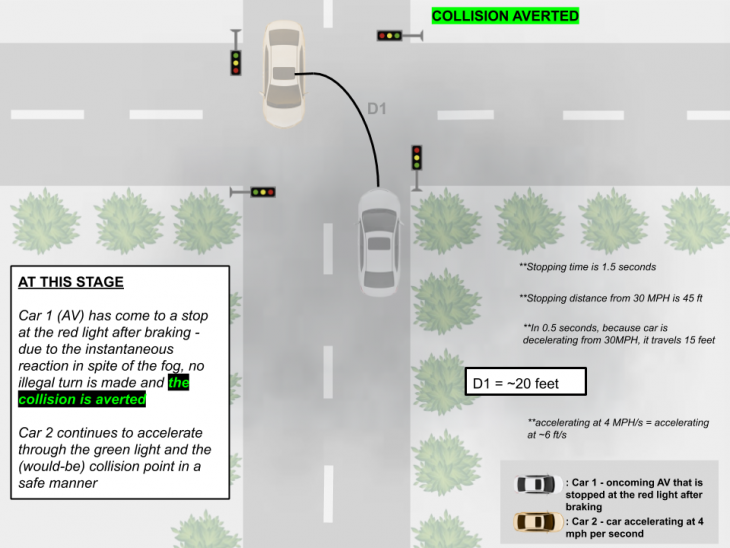
With humans as passengers, the time delay due to the non-zero reaction time is eliminated, providing a larger window of time for the vehicle to make a safe maneuver. As a result, even in dangerous lighting conditions, such as fog in the scenario above, AVs can prevent the collision.
When humans drive, our brain processes the plethora of surrounding visual data in real-time with a data-center level of compute while consuming less power than a lightbulb. To mimic these capabilities and drive without any human intervention, AVs must be equipped with a platform that can generate a minimum of 75 Tera-Operations-Per-Second (TOPS) for every watt of power. This unsolved optimization problem is known as the visual perception problem, and it is the largest barrier to society realizing full autonomy and all of its subsequent safety benefits.
Currently, platforms are based on repurposing legacy technology. Because these products are not purpose-built to enable fully autonomous vehicles, they can only enable partial autonomy. To allow vehicles to drive on their own, car OEMs must replace their incumbent, technologically constrained solutions with something that can solve the visual perception problem.
This novel, purpose-built product must be based on key innovations in math, ASIC architecture, and AI. This should lead to unmatched capabilities, demonstrating that it can solve the visual perception problem, making it indispensable for full autonomy. OEMs must horizontally integrate this solution into their vehicles to allow society to experience roads without collisions due to dangerous lighting conditions.
To learn more about Recogni, check out www.recogni.com









